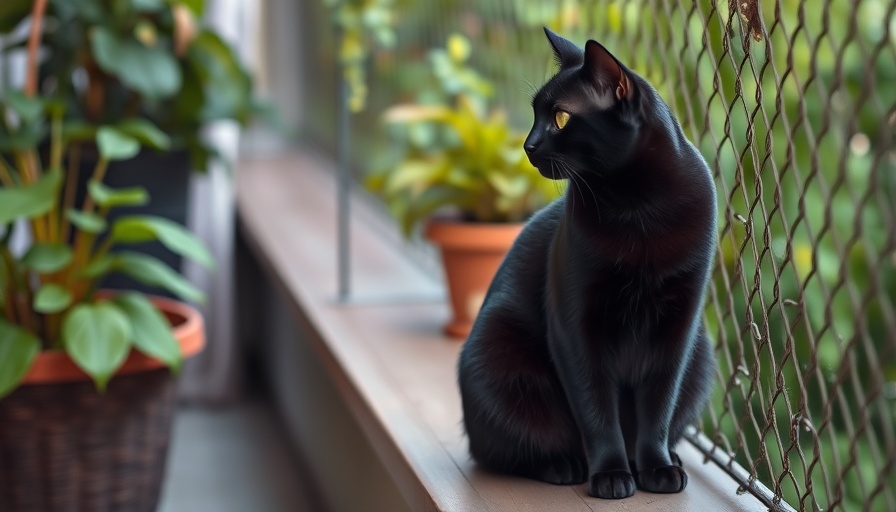
How a Cat Became a Virology Hero
In a surprising twist of fate, a Florida virus researcher named John Lednicky has turned to an unexpected source of scientific discovery: his cat, Pepper. This black domestic shorthair has gained notoriety not only for her charming demeanor but also for her peculiar hunting skills that have greatly aided in virology research. While most cats are known for their hunting prowess, Pepper's contributions have made a significant impact in understanding potential viruses within local wildlife.
Pepper's First Discovery: A New Virus
Pepper’s adventure began with a dead mouse she proudly brought to her owner—a sample that instead of becoming a mere gift, transformed into a research opportunity. Lednicky, a virologist at the University of Florida’s College of Public Health, turned this casual occurrence into a groundbreaking study. Initially searching for the deer mulepox virus, his tests revealed a brand-new virus—a jeilongvirus dubbed Gainesville rodent jeilong virus 1 (GRJV1).
This discovery is crucial, as it is the first time GRJV1 has been reported in the U.S. The research indicates that this virus poses a potential spillover risk, which means it could leap from rodents to other species, emphasizing the importance of surveillance in wildlife populations.
From One Virus to Another: Pepper Strikes Again
Pepper’s knack for hunting didn’t stop there. Earlier this year, after bringing home a shrew, she inadvertently aided in the discovery of another new virus. Testing revealed the Gainesville shrew mammalian orthoreovirus type 3 strain UF-1. Ortheoviruses can cause various illnesses, amplifying the importance of understanding the organisms in our environment.
Why Wildlife Virology Matters
The implications of these findings extend far beyond Pepper’s delightful antics. Wild animals often harbor diseases unnoticed by the public due to a lack of health monitoring that pets receive. Illnesses like rabies, Ebola, and West Nile originate in wildlife and can pose serious threats to human health. By studying these viruses, scientists like Lednicky aim to detect and combat potential outbreaks before they emerge.
A Lesson in Collaboration: Meet Jaha
Not one to rest on her laurels, Pepper is also training an apprentice, a cat named Jaha. As Pepper embarks on her journey as a virus hunter, she is now sharing her expertise, proving that the pursuit of knowledge knows no boundaries—even those of species. This collaboration highlights a refreshing perspective on teamwork in science, one that encourages learning and exploration in unexpected ways.
Connecting Science with Pet Ownership
This touching story merges pet love and scientific discovery, ideal for our audience—veterinarians, pet nutritionists, and trainers alike. Understanding the symbiotic relationship between humans and animals can reshape how we perceive pet ownership, emphasizing the extended responsibilities and the potential discoveries that come with it.
Emotional Takeaways: Pets as Partners in Discovery
For veterinarians and pet care advocates, Pepper's adventures illuminate the often-overlooked contributions pets can make. They are not just companionship; they can indeed become instrumental in scientific studies, potentially changing public health narratives around zoonotic diseases. Moreover, it reminds pet parents of the unique bond they share with their pets—an alliance that can lead to tangible contributions in understanding our world.
The Path Ahead: Future of Veterinary Science
As veterinary science progresses, Pepper's find draws a compelling map for future research—encouraging not just scientists but pet owners to embrace their animals as partners in discovery. Through ongoing collaboration and dedicated research, we can enhance our understanding of the connections between domestic animals and wild species and their role in public health.
In conclusion, as we peek into the lives of dedicated pet parents, stories like that of Pepper and her newfound role in virology foster a deeper appreciation for science and animals alike. It beckons a call to action for those within the community to pay closer attention to how the environments we create for pets can impact our wider ecological frameworks.
 Add Row
Add Row  Add
Add 




Write A Comment